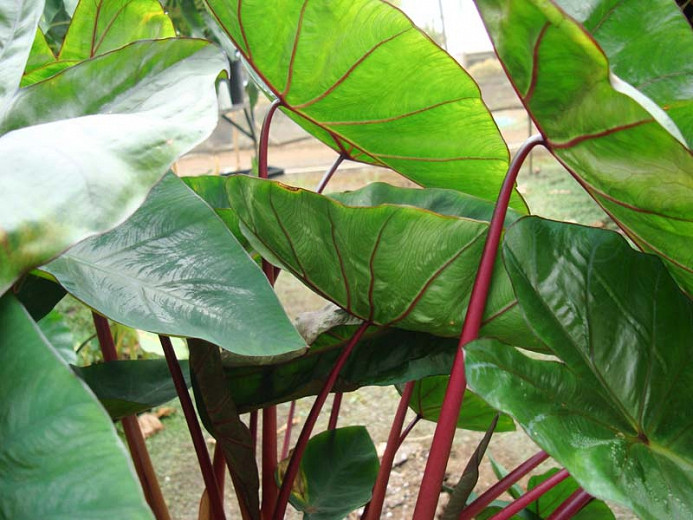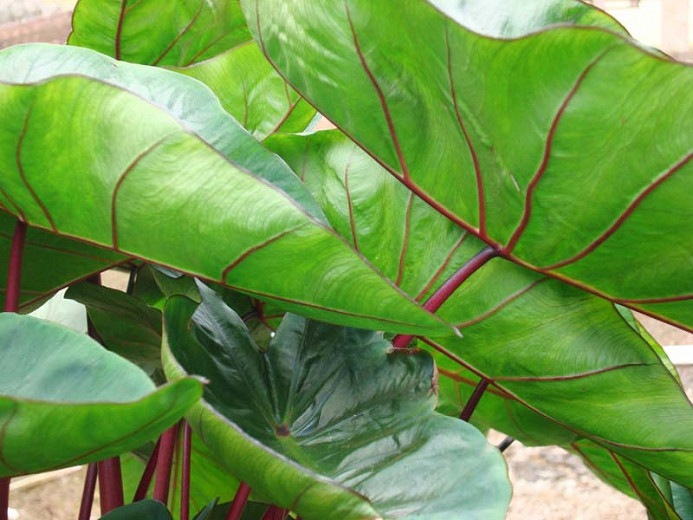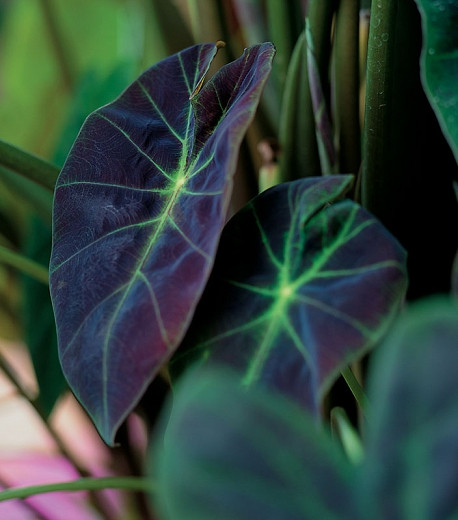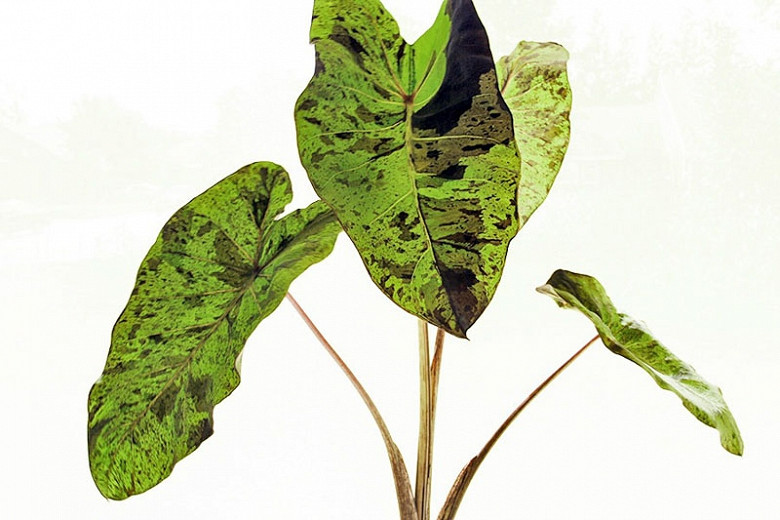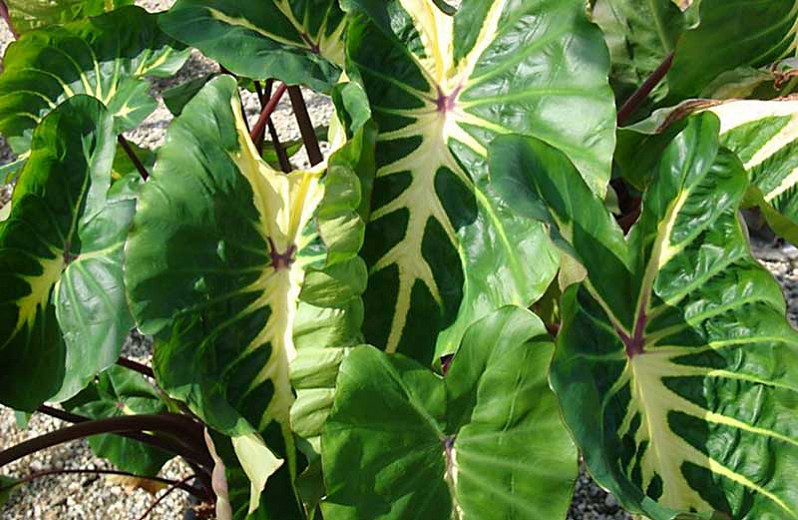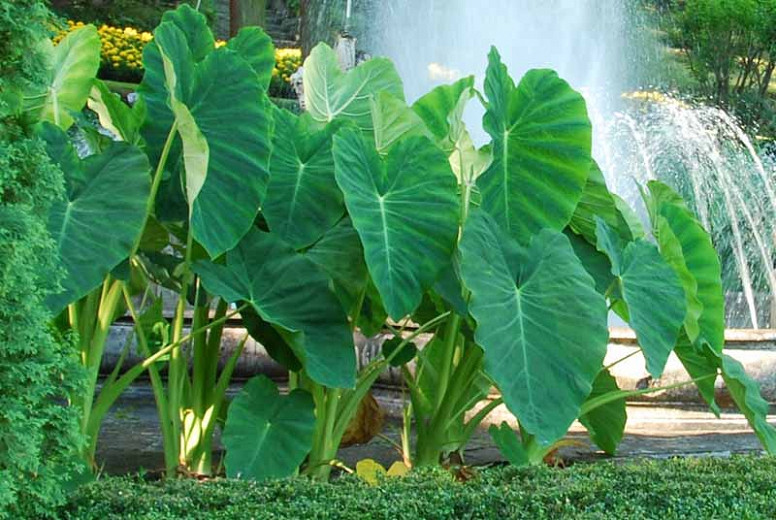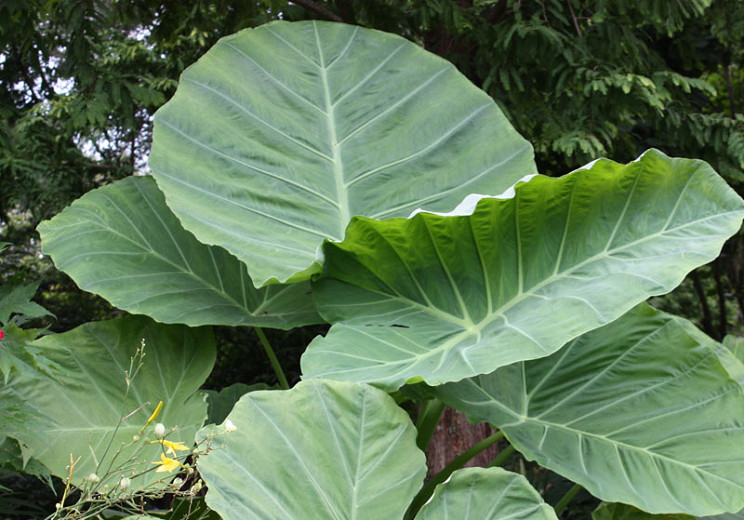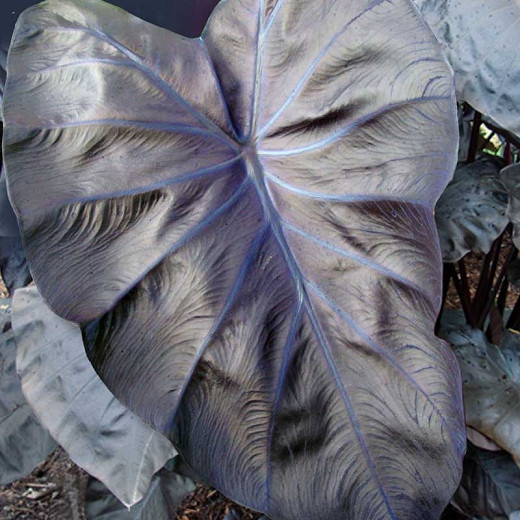Colocasia esculenta Hawaiian Punch (Taro)
Primarily grown for its spectacular foliage, Colocasia esculenta 'Hawaiian Punch' (Taro) is a tuberous, frost-tender perennial with long-stalked, thick and glossy, heart-shaped, fresh green leaves. Held on glossy red stems, the large leaves are adorned with attractive red margins and red veins on their underside. Unlike the leaves of Alocasia which point skyward, the leaves of Colocasia droop and point toward the ground. Reminiscent of calla lily flowers, the blossoms consist of a yellowish-green spathe and spadix. They are not particularly showy and are infrequently produced. 'Hawaiian Punch' is a hassle-free tropical that makes an unforgettable focal point and brings a distinctly tropical look to the garden. Compact, with a tidy clump forming habit, it is perfect for large containers.
- Grows up to 3 ft. tall and wide (90 cm)
- Performs best in sun or part shade in organically rich, moist to wet soils. Provide a sheltered location to protect the decorative leaves from strong winds. Best leaf color production in sun.
- Elephant Ears love water and nutrients. They require regular watering, particularly during dry summer periods. Provide regular fertilization during the growing season. The more you feed them, the larger they will grow. They can be planted in up to 6 in. (15 cm) standing water.
- Perfect as a specimen or in groups for beds and borders, near streams and ponds or in large containers.
- Generally disease free. Watch for glasshouse red spider mite, aphids and glasshouse whitefly.
- All parts may cause mild stomach upset if ingesting without cooking.
- Toxic to dogs, toxic to cats, toxic to horses.
- Native to tropical eastern Asia, Colocasia esculenta species was first brought to the Americas as a food crop for slaves. It was later promoted as an alternative crop to potatoes. Colocasia esculenta can tolerate a wide range of wet to dry sites and can easily invade wetland edges, swamps, blackwater streams and riverine forests.
- Find where this species is invasive in the United States.
- Discover beautiful U.S. native plant alternatives.
Requirements
| Hardiness | 7 – 12 |
|---|---|
| Heat Zones | 8 – 12 |
| Climate Zones | 12, 16, 17, 18, 19, 20, 21, 22, 23, 24, H1, H2 |
| Plant Type | Aquatic Plants, Bulbs, Perennials |
| Plant Family | Colocasia – Taro |
| Exposure | Full Sun, Partial Sun |
| Season of Interest | Spring (Early,Mid,Late)Summer (Early,Mid,Late)FallWinter |
| Height | 2' – 3' (60cm – 90cm) |
| Spread | 2' – 3' (60cm – 90cm) |
| Spacing | 36″ (90cm) |
| Water Needs | Average, High |
| Maintenance | Low |
| Soil Type | Clay, Loam, Sand |
| Soil pH | Acid, Neutral |
| Soil Drainage | Moist but Well-Drained, Poorly Drained |
| Characteristics | Showy |
| Tolerance | Wet Soil |
| Garden Uses | Beds and Borders, Bog Gardens, Patio and Containers, Ponds and Streams, Rain Gardens, Small Gardens, Water Gardens |
| Garden Styles | Mediterranean Garden |
